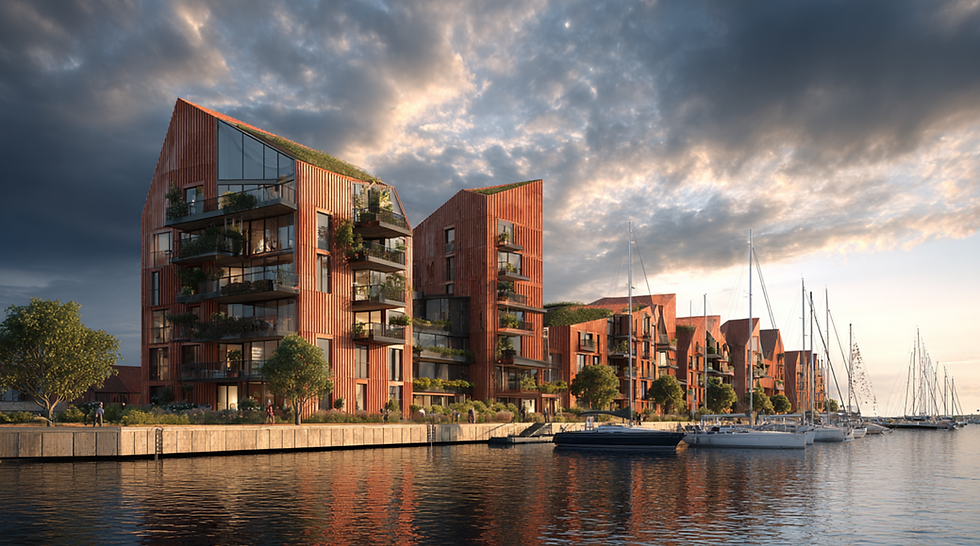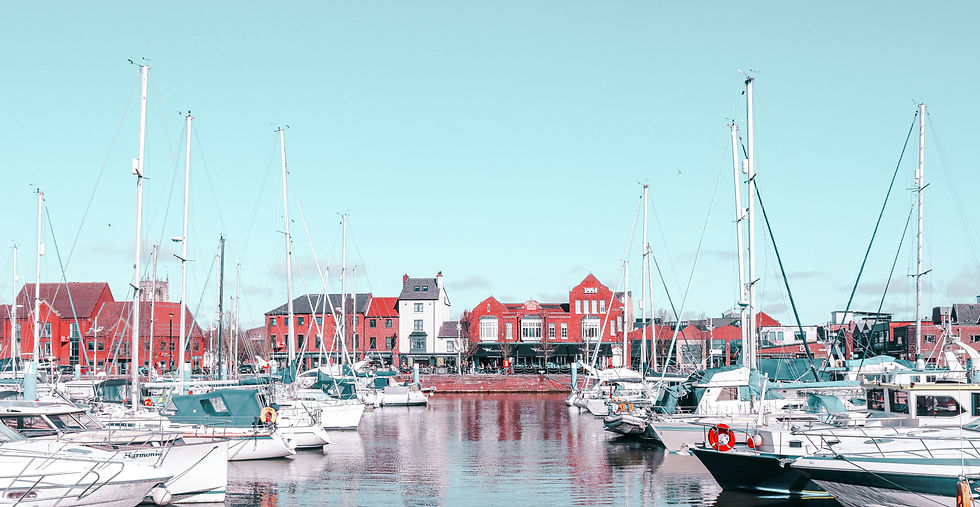AI and the Danish Local Elections: Reimagining democracy and the Power of Seeing the Future
- Frederick Rickmann

- 19 hours ago
- 2 min read
As Denmark approaches the next local elections, I’ve been reflecting on how artificial intelligence is quietly transforming both architecture and democracy. The connection might not seem obvious at first — but when AI can generate vivid, realistic visions of what our cities could become, it opens entirely new ways for people to engage with local politics.
Take Horsens in Denmark, for example. The city already has a recent harbour development, but the style and layout of that project is largely weak and anonymous — it could be anywhere. It lacks a connection to the existing city and its historic character. In my experiments with AI-generated architecture, I reimagined this waterfront: where once there were sheds and industrial buildings, I explored how a new, multi-use district could emerge, fully integrated with the urban fabric of Horsens.

Horsens has a distinct architectural identity: red brick dominates the streetscape, and most buildings feature pitched and sloping roofs. Any new development, I felt, should respect this heritage while allowing for innovation. Using AI tools, I could quickly test multiple variations — a kind of digital sketchbook where history meets future potential.

What’s striking is how residents respond to these visualisations. Unlike verbal descriptions or abstract planning documents, images of a possible future city feel tangible and immediate. Suddenly, discussions about zoning, density, or public spaces become emotional, personal, and actionable. People start to imagine themselves living in that future, and the conversation shifts from policy to shared possibility.

In this way, AI isn’t replacing architects or planners — it’s democratizing imagination. It gives citizens a way to see potential futures, weigh trade-offs, and participate in shaping their city with clarity and creativity. Perhaps the real promise of AI in urban development is not only efficiency or aesthetics, but the way it makes the future visible — and therefore debateable.
Maybe this is what local democracy could look like in the age of AI: a space where seeing is believing, and imagining together is the first step toward deciding together.
To get the book, Dansk Ukrudt og Kunstig Intelligens, and read more: https://www.1234design.com/70-books/dansk-ukrudt
#ArtificialIntelligence #UrbanPlanning #AIArchitecture #LocalElections #SmartCities #Denmark #CivicEngagement #FutureCities #DigitalDemocracy #SustainableDesign #Horsens #KunstigIntelligens #Byplanlægning #Lokalvalg #SmarteByer #Danmark #Borgerengagement #FremtidensByer #DigitaltDemokrati #BæredygtigtDesign #人工智慧 #都市計畫 #人工智慧建築 #地方選舉 #智慧城市 #丹麥 #公民參與 #未來城市 #數位民主 #永續設計



Comments